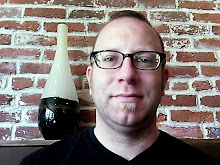[I just sent the following piece off to the Churchill College Newsletter – the lighter of our two alumni publications - at the request of my old tutor. It’s difficult packing three chapters into 500 words, but I think I managed it without making too many overgeneralizations. It’s probably more difficult knowing my former fellow MCR members might read it.]
“Only connect...”
The oft quoted epigraph to E.M. Forster’s Howard’s End seems to be the contemporary zeitgeist. From Facebook and Twitter to the models of innovation that have informed university research policies for the past decade, a virtual obsession with connecting abounds. Of course, there is little doubt that networks seem to be powerful explanatory models for complex phenomena. But what happens when the model of social networks travels from the circles of social science and complexity theory into the realm of ‘folk’ social theory? Are the social networks of theory also the social networks of management, policy, and pop-culture?
I have been preoccupied with this question for several years as the topic of my PhD dissertation in social anthropology. Many people describe networking to me as something humans do ‘naturally’, and that by understanding how networking works, one might network better. It’s said that one’s connections to other people indicate how likely opportunities are to come one’s way and increasing the number of your connections might increase your opportunities. Furthermore, opportunities might come to you through any kind of connection, thick or thin, shallow or deep.
But what does it mean to be part of a network? Social networks are not a new idea. Networks have been utopian models for social and civil engineering projects since at least the development of the post-revolutionary French state. Karen Otis has described how competing descriptions of the nervous system (as continuous flow of nervous fluid or as discontinuous network of individual parts) was embraced by scientists, engineers and artists as metaphors for the organization of society and the relationship between humans and nature.
Forster, writing at the beginning of the 20th century was concerned that the world was too complex. His plea that we ‘only connect’ was not a suggestion that we multiply connections, adding complexity. Rather, it enjoins us to increase the intensity of the human connections immediately before us. In other words, the answer to the anxieties of modern life doesn’t lie in the quantity of connections a person possesses, but in their content. This is quite the opposite message of social networking, though not of Social Network Analysis in which the content of a connection must be defined if the network model is to have any meaning. The former seeks to flatten relations to their binary fact; the latter seeks to differentiate those relation’s significance.
The late anthropologist Clifford Geertz described the difference between symbolic and non-symbolic information sources in terms of a division between models of and models for the world. Both act as descriptions of the realities people inhabit (models of) but symbolic information sources provide meaning to those realities (models for). Perhaps the move from social networks in theory to social networking as practice is similar. Both describe the social realities of humans in terms of connections, but social networking also takes the network as an inevitable model for shaping the world. Whether it is a world we really want to shape is another question.
Spend More Time With Your Dog This Christmas
-
Personalized Medicine: Developing Drugs Tailored Specifically to Your
Genetic Make Up with Dr. Alberto Gutierrez
The ‘Nifty Fifty (times 4)’, a program of...
1 week ago




No comments:
Post a Comment